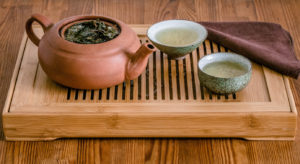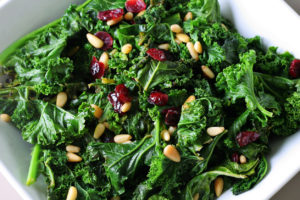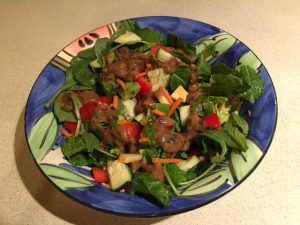I don’t know about you, but I am absolutely fascinated by tea—it’s history, many flavors, health benefits, the ceremony around it, how it’s shaped cultures around the world, tea as an art form…the whole package.
In fact, when our patients arrive at our clinic, The Santa Monica Wellness Center, the first question we ask them is, “May I offer you some tea?”
Drinking tea is also one of my favorite ways to maintain a sense of calm, while staying clear and focused throughout the day. Today’s article will explore some some pretty cool facts behind traditional Chinese tea culture with a spotlight on Oolong tea.
How tea came to be
Tea has been around for centuries, and is believed to have been discovered in 2737 BCE by
Chinese Emperor Shennong.
As a scientist (and health advocate), Shennong insisted all water in the country be boiled before consumption to prevent the spread of disease.
During a trip with his court, they stopped to rest and drink. While water was boiled for drinking, some leaves fell into it from a nearby bush. The leaves turned the water a rich brown color and the Emperor was intrigued, so he drank it.
As the story goes, he found the infusion very refreshing and thus, ancient Chinese tea culture was born.
The influence of tea on ancient and modern China
Tea has significantly influenced Chinese culture in terms of economics, religion, etiquette, medicine, class, the arts, and even politics.
For example, the practice of tea drinking traveled throughout Europe and many other nations via the Silk Road and other channels of trade.
In ancient times, “tea drinkers” were considered cultural elites, which led to increased demand for Chinese teaware made from porcelain (aka: fine China).
Many powerful political alliances were formed in Chinese tea houses, and the custom of preparing and serving tea in China holds many meanings—from showing respect to celebrating special occasions.
In summary, there are few natural resources which have shaped the landscape and culture of China, and many other nations, as much as the humble tea leaf.

Tea plantation in Hangzhou, China
Tea as medicine
Tea leaves were also used in Traditional Chinese Medicine to help a variety of ailments, including:
- To refresh the mind
- Enhance alertness
- Help with weight-loss
- Aid digestion and promote healthy bowel function
- Promote bodily fluid production
- Clear heat and phlegm
- Headaches
- Dizziness
- To promote urination
Today, scientists attribute most of tea’s health benefits to its naturally-high polyphenol antioxidant content.
Oolong tea
Did you know, despite the plethora of tea choices found in your local tea shop, that are only 4 types of tea?
- Black tea
- Green tea
- White tea
- And Oolong tea
The major difference between the four is their fermentation and oxidation process, which affects their flavor, nutrient composition, and color.
Oolong is a semi-fermented tea which lies somewhere between unfermented green tea and fermented black tea.
Native to the Wuyi Mountain region of China, it has a bolder, earthier flavor than unfermented green tea—which earned it a special reputation in ancient China, where only green tea had been available to that point.
Unlike green tea, it is allowed to partially oxidize, which gives it its bolder flavor and color (black tea, for example, is fully oxidized).
Despite it’s incredible flavor and health benefits, Oolong accounts for only 2% of the world’s tea production1…which is part of the reason we’re learning about it today.
Health benefits of Oolong tea:
According to Traditional Chinese Medicine, humble Oolong is useful for:
- Preventing tooth decay
- Reducing skin irritations
- Lowering cholesterol
- For bronchial spasms
- Regulating body temperature
- Improving fat metabolism
Per modern research, Oolong’s health benefits include:
- Reduced risk of heart disease and high cholesterol2
- Better cognitive function and protection against neurodegenerative disease3,4
- Healthier more diverse gut flora5
- Stronger bones6
- Healthier weight and lipid metabolism7, 8
- May improve blood sugar levels in Type 2 diabetics9
- Reduced stress—this is due to the natural L-theanine in Oolong which promotes a natural state of relaxation while enhancing awareness
- Improvements in chronic skin conditions, like eczema and dermatitis10
- Enhanced tooth and oral health11
There is also some evidence that drinking Oolong tea is protective against cancer, but of this writing, the case is stronger for green tea as an anti-cancer medicinal12.
Preparing Oolong tea:
As you probably know, Americans have a ghastly reputation among the British and the Chinese for our tea preparation methods: boil water (or worse, microwave it!), pour it on the tea, and drink.
In Chinese culture, different teas should be prepared with different temperatures of water and using different methods depending upon the type of flavor, caffeine level, and overall experience you hope to achieve.
Here are the basics on how to prepare a proper cup of Oolong tea:
- Choose your tea vessel (either a mug or small tea pot)
- Use 1 tablespoon balled leaves or 2 tablespoons loose leaf tea for every 6 ounces of water
- Heat filtered or spring water to just below the boiling point (about 190-200 degrees). Tap water isn’t recommended as the added chemicals and their flavors will affect the final product
- Pour hot water over the tea leaves, swish, and quickly discard the water (this cleanses the tea leaves and awakens their flavor). *This step is optional, but give it try and taste the difference for yourself
- Pour a second helping of water over the tea leaves
- Steep 1-5 minutes and enjoy!

Chinese Tea Ceremony with Oolong: Tea Table Chaban with two cups and a tea pot.
How to choose quality Oolong tea
- Look for organic whenever possible
- Opt for balled or loose leaf over tea bags for better flavor
- Look for a uniform color, there may be some variation of greens, browns, and yellows but nothing pronounced
- A nice, subtle aroma—it should not smell stale or overly floral
- If choosing balled tea, look for uniform size which indicates good quality
We’ll be sure to feature more content about green, black, and white teas in future posts, as they all have fascinating histories and health benefits behind them.
In the meantime, if you’re a green tea or matcha enthusiast, be sure to check out my previous article: “Green Tea or Matcha? What You Need to Know”.
Cheers to tea and good health!
-Dr. Patricia















